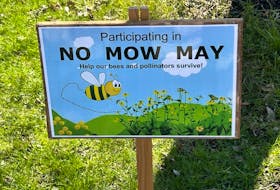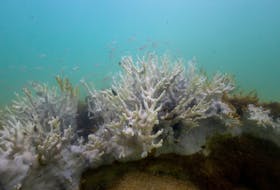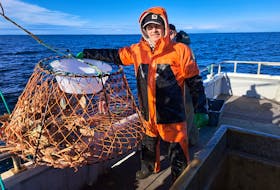WOLFVILLE, N.S. — Driving along the Wellington Dyke at high tide, I’m convinced the water is higher than ever before. It’s been a couple of years since I spotted a blue heron in the harbour. The places where bank swallows used to nest eroded away, so there’s none of them, and the August clouds of sandpipers are noticeably diminished.
My kids grin when I mention the higher than ever tides and point out that all the melting glaciers on the Greenland ice sheet are impacting us here. There is no humour in their expressions. Nor should there be.
In terms of bio capacity, we are using up 1.7 planets when we only have this poor, overtaxed one. We’re drawing down or overtaxing our natural capital, according to GPI Atlantic. No wonder the natural world I see is being diminished. For human beings, having a footprint smaller than the planet's biocapacity is a necessary condition for sustainability.
Global warming is resulting in both sea-level rise and coastal erosion. Sea levels have been rising over the past century, and the rate has been increased in recent decades. The other major cause is thermal expansion caused by warming of the ocean (since water expands as it warms), according to National Geographic.
Parks Canada archeologist Becki Dunham, who has been looking at these issues in terms of heritage landscapes, has spent the last 20 years on the shores of Fortress Louisbourg in Cape Breton.

At Louisbourg, a 17th to 18th century site heavily impacted by sea-level rise and storm events, Dunham learned that even though armor stone barriers could be built to try and hold back the sea, “we didn’t appreciate the power of the ocean.”
The distressing thing, Dunham says, is greater storm intensity and flooding in historically valuable regions of this country. After all, when Canada was a young nation, the oceans were our highways.
Dunham helped develop a coastal heritage management strategy several years ago to address climate change impacts at Louisbourg. The coastal research she carried out to develop this strategy, and the lessons learned, are far-reaching for Atlantic Canada.
We want to keep the past preserved as much as possible, but what should Canadians be considering? According to the Sierra Club, The Netherlands has already set a fine example. The Dutch cultivate salt-tolerant crops, are building sand bars to protect the coastline and, in cities, they are digging giant concrete bowls for rainwater to drain into as temporary reservoirs.
The World Economic Forum’s 2019 risk report indicates 90 per cent of the planet’s coastal regions will be affected by rising tides to some extent. The potential loss of infrastructure is worrisome. Remember where water treatment facilities in this part of the Valley are located…
Some municipal leaders in the United States have seen the wisdom in switching from sea walls to waterfront parks that embrace saltwater marshes. Boston is one of those cities. Mayor Martin Walsh has announced a scheme to build a network of waterfront parks. They would, in the long term, add 67 acres of green space and restore 122 tidal acres.
"Building a living shoreline starts with a good understanding of what the natural condition along that shoreline once was," said Steven Scyphers, who is a coastal scientist at Northeastern University. He maintains that the creation of a living shoreline is what our times call for.
Douglas Worts, a leading light in the field of culture and sustainability in Canada, learned his worldview from a Maori elder in New Zealand.
“Culture is formed by standing on the shoulders of ancestors, learning from the past to draw wisdom and insight for a sustainable future,” he said when he visited the Valley.
When symptoms of climate change occur one can look through environmental, societal and economic lens, but to focus on the latter is to perpetuate problems, Worts has said. No wonder sustainability is an elusive thing.
As U.S. scientist Gus Speth has said: “I used to think that top environmental problems were biodiversity loss, ecosystem collapse and climate change. I thought that 30 years of good science could address these problems. I was wrong. The top environmental problems are selfishness, greed and apathy, and to deal with these we need a cultural and spiritual transformation. And we scientists don’t know how to do that.”
Since our society is based on an economic system geared to the pursuit of unspeakably large piles of money, we must change our thinking. Look at the goals of the Citta Slow movement, which include making life better for everyone and protecting the environment.
That’s the collective attitude our times require.
Former Advertiser and Register reporter Wendy Elliott, now retired, lives in Wolfville.









